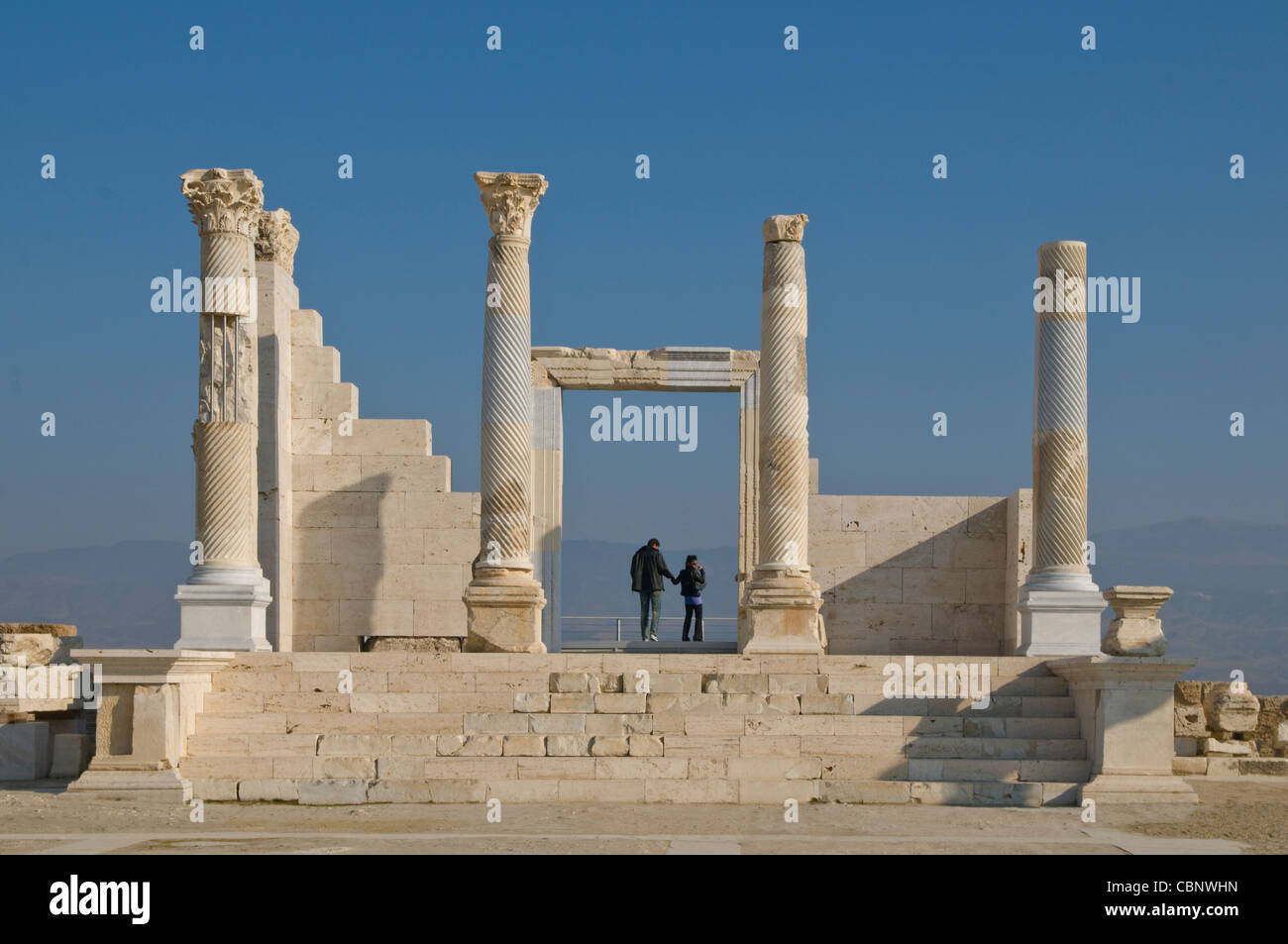Laodicea on the Lycus was the ancient metropolis of Phrygia Pacatiana built on the river Lycus in Anatolia,Denizli ,Turkey

Image details
Contributor:
Ayhan Altun / Alamy Stock PhotoImage ID:
CBNWHNFile size:
34.9 MB (997.3 KB Compressed download)Releases:
Model - no | Property - noDo I need a release?Dimensions:
4287 x 2848 px | 36.3 x 24.1 cm | 14.3 x 9.5 inches | 300dpiDate taken:
19 November 2011Location:
Denizli,TurkeyMore information:
Laodicea on the Lycus ( Latin: Laodicea ad Lycum, also transliterated as Laodicea or Laodikeia, earlier known as Diospolis and Rhoas; modern Turkish: Laodikya) was the ancient metropolis of Phrygia Pacatiana (also attributed to Caria and Lydia), built on the river Lycus , in Anatolia near the modern village of Eskihisar (Eski Hissar), Denizli Province, Turkey.The existing remains still attest its former greatness. The ruins near Denizli (Denisli) are relatively well preserved. Its stadium, gymnasium, and theatres (one of which is in a state of great preservation, with its seats still perfectly horizontal, though merely laid upon the gravel), are well deserving of notice. Other buildings, also, on the top of the hill, are full of interest; and on the east the line of the ancient wall may be distinctly traced, with the remains of a gateway; there is also a street within and without the town, flanked by the ruins of a colonnade and numerous pedestals, leading to a confused heap of fallen ruins on the brow of the hill, about 200 meters outside the walls. North of the town, towards the Lycus, are many sarcophagi, with their covers lying near them, partly imbedded in the ground, and all having been long since rifled. Amongst other interesting objects are the remains of an aqueduct, commencing near the summit of a low hill to the south, whence it is carried on arches of small square stones to the edge of the hill. The water must have been much charged with calcareous matter, as several of the arches are covered with a thick incrustation. From this hill the aqueduct crossed a valley before it reached the town, but, instead of being carried over it on lofty arches, as was the usual practice of the Romans, the water was conveyed down the hill in stone barrel-pipes; some of these also are much incrusted, and some completely choked up. It traversed the plain in pipes of the same kind.